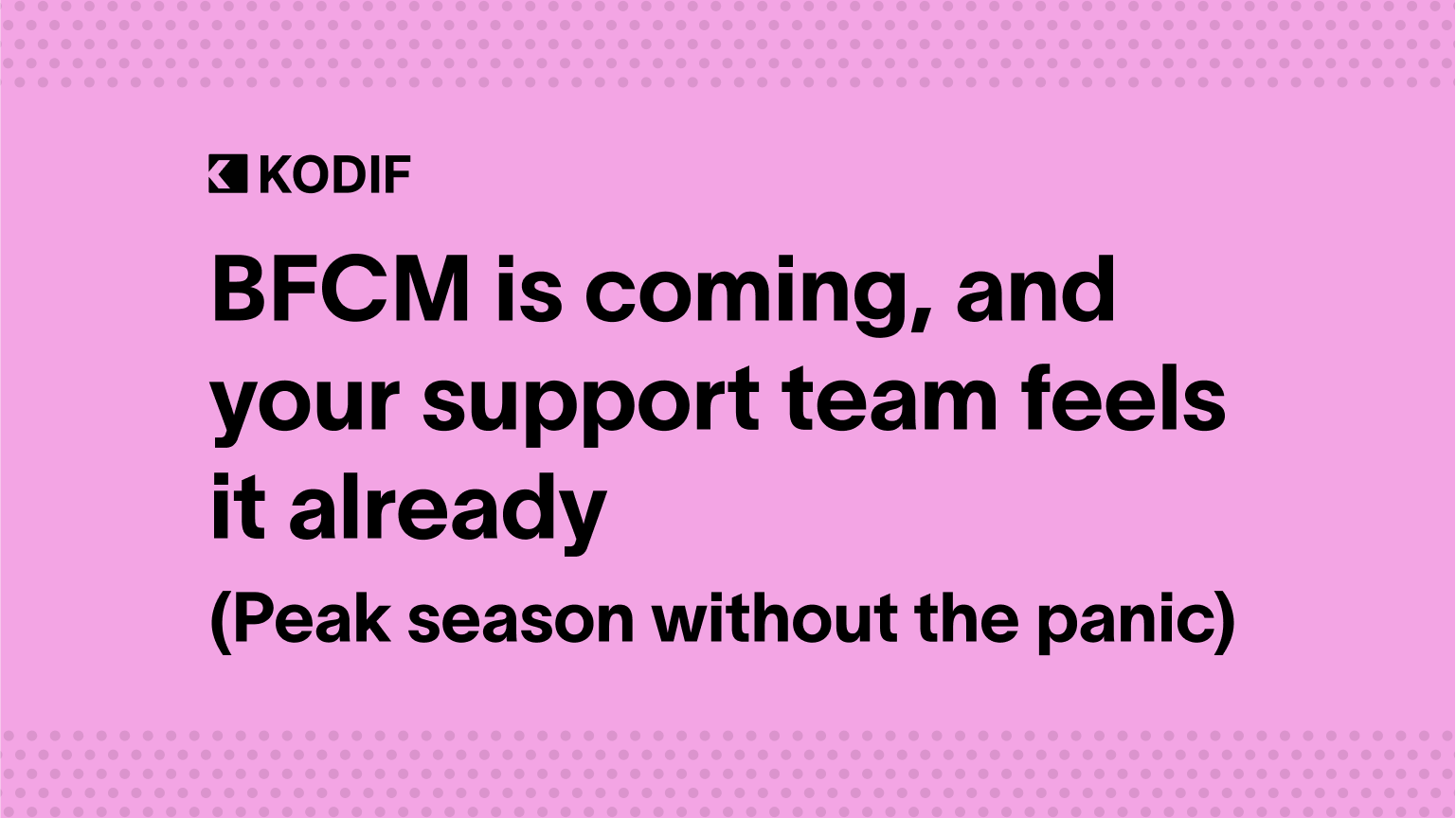There’s a moment in every ecommerce company (usually sometime in early October) when the panic starts to set in.
Marketing is ramping up, ops is running inventory drills, and the support team is sitting there quietly… pretending they don’t see the terrifying tidal wave headed their way.
Because if you’ve lived through a Black Friday/Cyber Monday (BFCM) before, you know all too well that support doesn’t just “scale.” It swells. Then floods.
When things break, support feels it first
You might be doing everything right: your promo copy might be perfect, your landing pages might convert like actual magic, your shipping partners might even hit SLAs.
But if one thing breaks, whether it’s a delayed order, a duplicate charge, a sizing confusion, a discount that doesn’t apply, support is where it lands.
Now multiply that by 3x normal volume, sprinkle in some holiday stress, and subtract half your team to flu season or burnout, and you’ve got the BFCM math most CX leaders live with every year.
The wrong kind of help hurts more than it helps
And here’s where most brands panic-deploy chatbots.
You know the kind:
- “Hi! How can I help?” (Then ignores everything you type.)
- Offers one of three irrelevant FAQ links
- Can’t escalate properly
- Sounds like a cheerful robot at a funeral
Customers don’t just get frustrated at all this, they lose trust. And agents, meanwhile, still end up fielding the mess.
Bad automation doesn’t lighten the load, it just adds confusion to the queue.
What “ready” actually looks like
Being BFCM-ready isn’t just about staffing up. It’s about setting up your systems to handle what’s coming:
- Clear escalation paths that don’t trap customers in loops
- Segmented flows for high-risk moments (refunds, late deliveries, etc.)
- Tone-aware messaging for anxious or frustrated customers
- Helping humans out with actually useful AI to create a pleasant and personalized experience at scale
- A feedback loop so you can learn in real time and adjust
And most importantly, all of this should be ready before your first promo email goes out.
What the best brands are doing now
Top ecommerce support teams aren’t just planning. They’re pressure-testing:
- Running internal pilots of new automation flows
- Training agents on high-emotion scenarios
- Using historical data to flag problem patterns
- Segmenting ticket types that can (and shouldn’t) be automated
- Building response logic based on sentiment and customer history
In other words, they’re not waiting for chaos to learn what works.
How AI fits into this (if you do it right)
The goal isn’t to replace your team with AI. It’s to make your team faster, sharper, and more available for the complex stuff.
That means:
- AI agents that actually resolve issues, not just route or reply
- Smart routing for nuanced conversations (subscriptions, refunds, gifting issues)
- Real-time insights on what’s trending and what’s breaking
- Support flows that learn and improve as you go
The trick isn’t to automate everything, it’s to automate the right things, at the right time, with the right context.
TL;DR: if you wait until November, it’s already too late
BFCM isn’t just about revenue. It’s a customer experience stress test, and your support team is on the front lines.
The brands that win? They don’t just ship fast and discount well. They deliver trust, even under pressure.
Start now, test early, and make sure your automation isn’t just plugged in, it’s actually helping.
And if you want to see how other teams are doing it right?
Join us for our webinar featuring CX leaders from Boldr, OneSkin, and KODIF.
Support survival: BFCM edition
How to prep your team for BFCM 2025 with better AI, smarter automation, and less chaos.
August 14th @ 2PM ET









